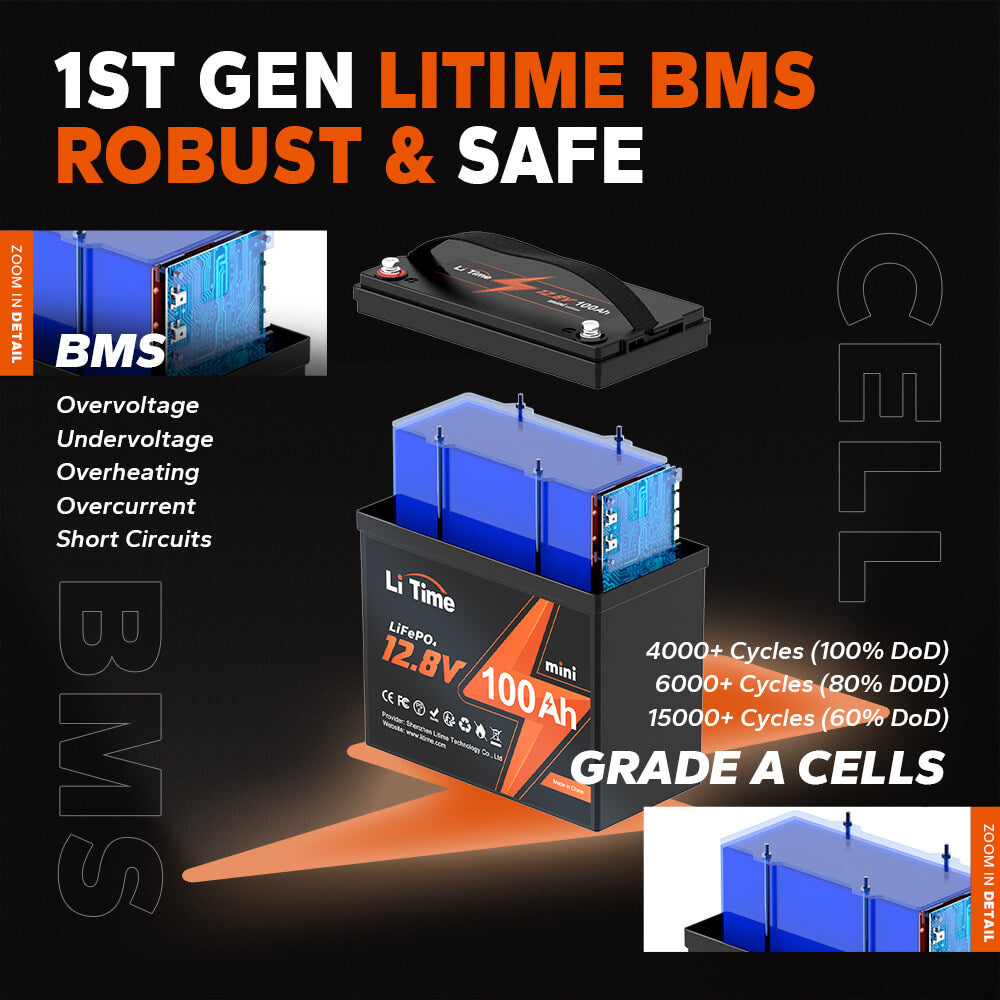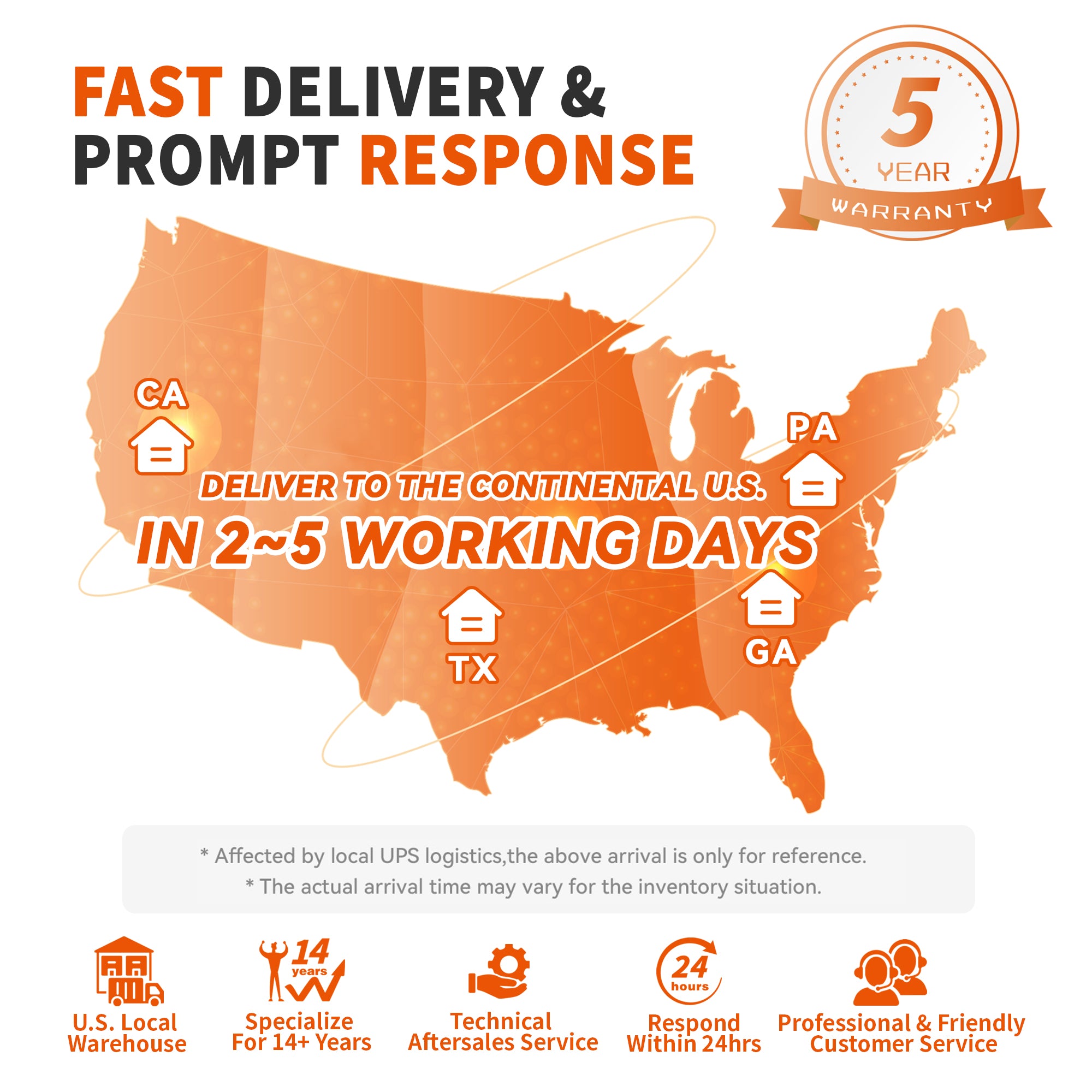Lithium batteries have become increasingly popular due to their high energy density and longer lifespan compared to other battery types. However, encountering issues with charging can be frustrating and inconvenient. In this article, we will explore common reasons why lithium batteries may not charge, provide troubleshooting steps, and discuss best practices to avoid charging problems.
Common Reasons for Lithium Battery Not Charging
1. Insufficient voltage from the charger
One of the most common reasons for a lithium battery not charging is insufficient voltage from the charger itself. Chargers provide the necessary voltage to recharge the battery. If the voltage output is too low, the battery won't charge properly. To resolve this issue, ensure that you are using a charger with the correct voltage output for your specific lithium battery.
Please consult the table below for information regarding the voltage specifications of various LiFePO4 battery packs and systems.

2. Overheating of the battery or charger
Lithium batteries are sensitive to high temperatures, which can affect the charging process. If the battery or charger becomes too hot during charging, it may prevent the battery from charging effectively. To avoid overheating, make sure to charge your lithium battery in a well-ventilated area and keep it away from direct sunlight or heat sources.
Overheating can have detrimental effects on LiFePO4 (Lithium Iron Phosphate) batteries, potentially leading to damage and reduced performance. LiFePO4 batteries are known for their excellent thermal stability compared to other lithium-ion battery chemistries, but they are not completely immune to the negative impacts of high temperatures.
LiTime understands the importance of protecting LiFePO4 batteries from overheating, and that is why all LiTime LiFePO4 batteries come equipped with a sophisticated battery management system (BMS) that includes temperature monitoring and protection features.

3. Faulty or damaged charging cables/ports
Sometimes, faulty or damaged charging cables or ports can prevent a lithium battery from charging. Check the cable and port for any signs of damage or wear. If you notice any issues, replace the cable or repair the port to establish a proper connection between the charger and battery.
4. Battery protection mechanisms engaged
Lithium batteries are equipped with built-in protection circuits designed to prevent overcharging or low temperature, as mentioned earlier. Battery with low temperature protection, like LiTime 12V 100Ah TM. When the temperature is below 0°C (32°F), the BMS will cut off the charging. It may be instances where these safeguards are mistakenly activated, leading to difficulties in charging the battery. However, these protective mechanisms play a crucial role in ensuring the battery's safety and longevity.
Troubleshooting Steps for Lithium Battery Not Charging
1. Check the charger and power source
Begin troubleshooting by ensuring that the charger is functioning properly. Test it with another compatible device or try a different charger to determine if the issue lies with the charger itself. Additionally, check the power source to ensure it is providing electricity consistently.
2. Inspect the battery and connections
Visually examine the battery for any physical damage, swelling, or corrosion on the contacts. If you notice any abnormalities, replace the battery. Also, check the connections between the battery and charger to ensure they are secure and free from debris that could hinder proper charging.
3. Seek professional help
If all troubleshooting steps fail to resolve the charging problem, it's advisable to seek professional assistance. Contact the manufacturer or a qualified technician who can analyze the issue and provide expert guidance or repair services.
LiTime provides 5-year warranty for our LiFePO4 batteries, if you have any questions, contact service@litime.com, and we will always be there to assist you.

Best Practices to Avoid Lithium Battery Charging Problems
1. Use compatible chargers and cables
To avoid potential charging problems, always use chargers and cables specifically designed for your lithium battery. Using incompatible or third-party accessories can lead to suboptimal charging performance or damage to the battery.
Can I charge my LiFePO4 lithium battery with a normal charger? The answer is not recommended. It will affect the performance and life of lithium iron phosphate batteries. Read on the article to learn more.

2. Store and handle batteries properly
Proper storage and handling of lithium batteries contribute to their longevity and overall performance. Store batteries in a cool, dry place away from extreme temperatures and moisture. Additionally, avoid exposing them to physical damage or dropping them, as this can affect their charging capabilities.
Conclusion
Encountering issues with a lithium battery not charging can be frustrating, but by understanding common reasons and following troubleshooting steps, you can resolve many problems. Additionally, adhering to best practices such as mistakes to avoid when charging, using compatible chargers, proper storage, and keeping devices up to date will help prevent future charging issues. Remember, if all else fails, seek professional assistance to ensure the safety and optimal performance of your lithium batteries.








